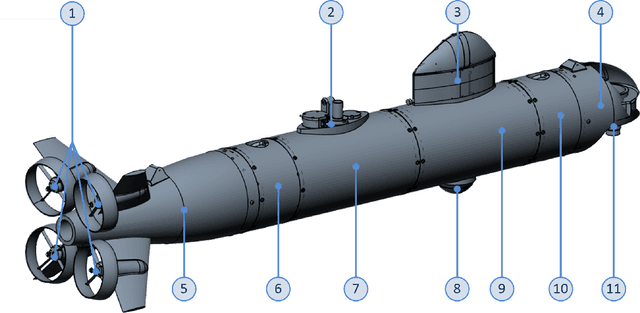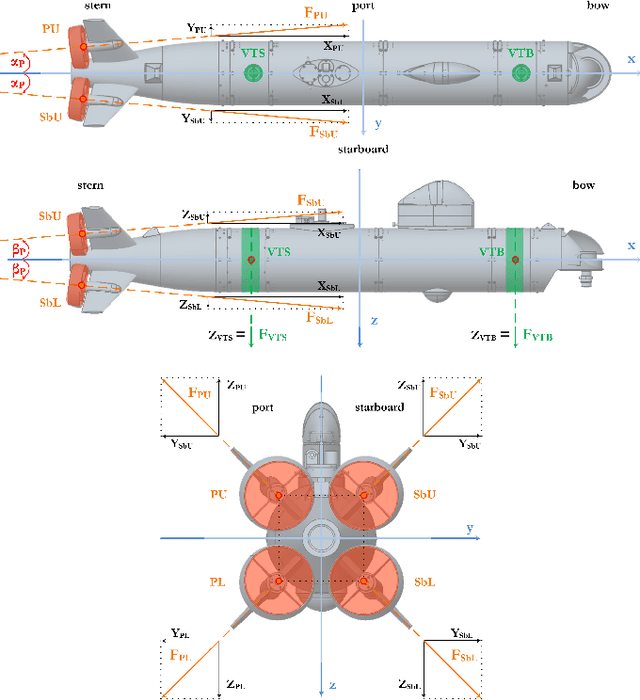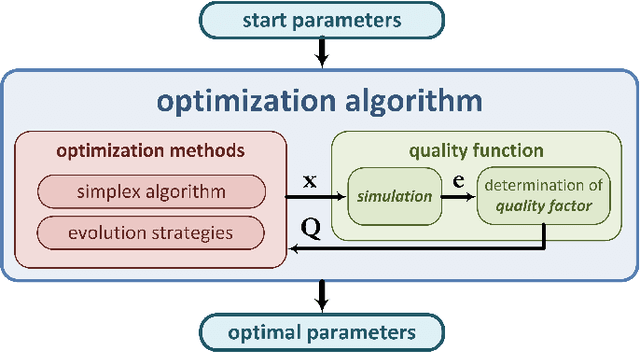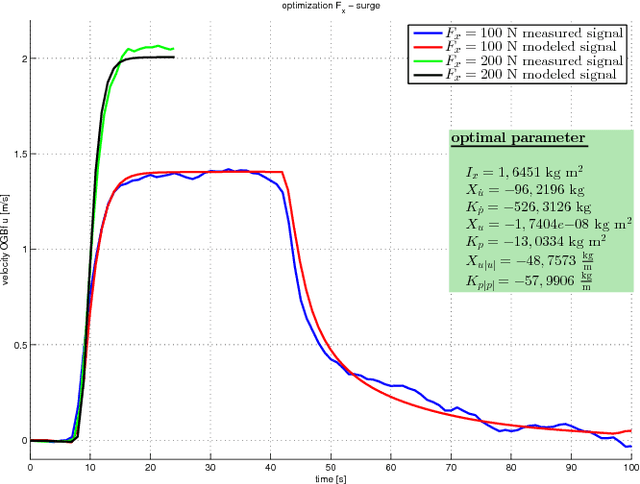Model Identification and Controller Parameter Optimization for an Autopilot Design for Autonomous Underwater Vehicles
Paper and Code
Jul 10, 2017



Nowadays an accurate modeling of the system to be controlled is essential for reliable autopilot. This paper presents a non-linear model of the autonomous underwater vehicle 'CWolf'. Matrices and the corresponding coefficients generate a parameterized representation for added mass, Coriolis and centripetal forces, damping, gravity and buoyancy, using the equations of motion, for all six degrees of freedom. The determination of actuator behaviour by surge tests allows the conversion of propeller revolutions to the respective forces and moments. Based on geometric approximations, the coefficients of the model can be specified by optimization algorithms in 'open loop' sea trials. The realistic model is the basis for the subsequent design of the autopilot. The reference variables used in the four decoupled adaptive PID controllers for surge, heading, pitch and heave are provided a 'Line of Sight' - guidance system. A constraint criteria optimization determines the required controller parameters. The verification by 'closed loop' sea trials ensures the results.
 Add to Chrome
Add to Chrome Add to Firefox
Add to Firefox Add to Edge
Add to Edge